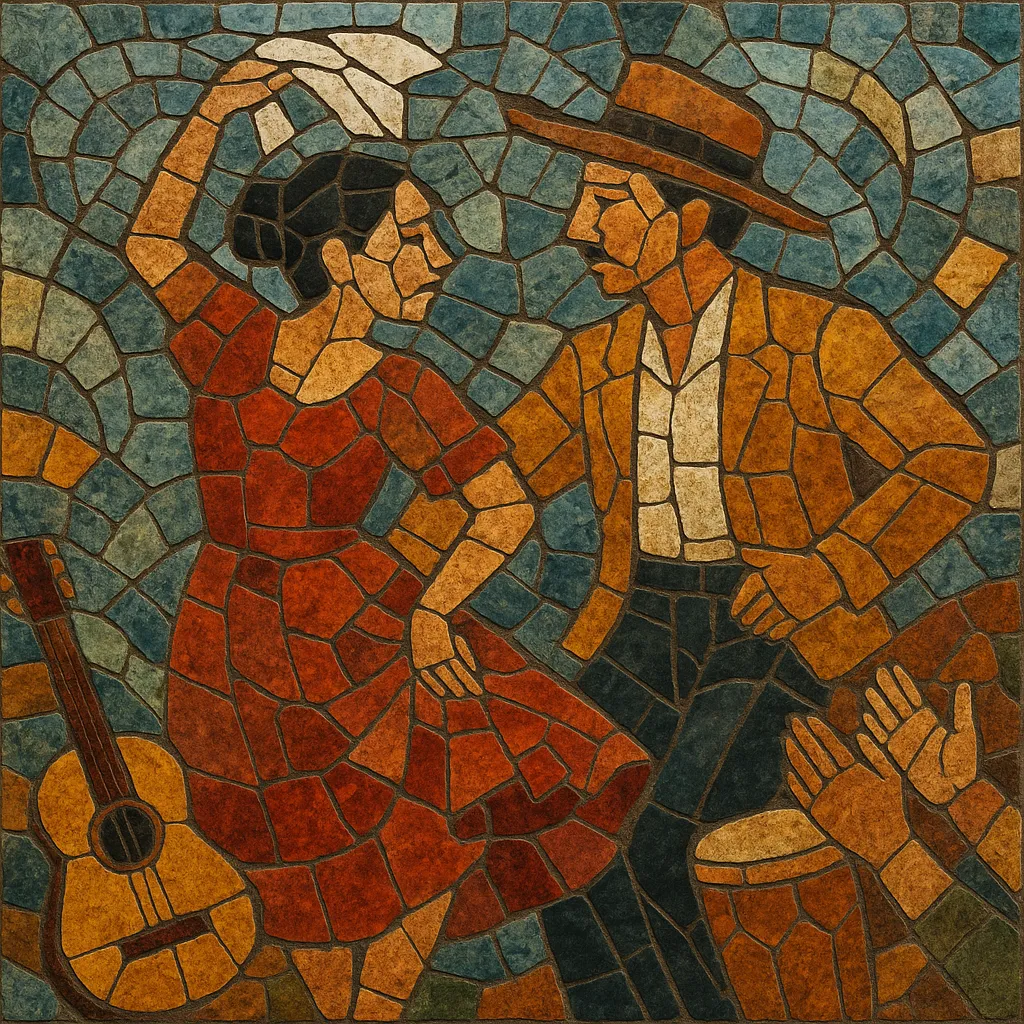Zamacueca is a 19th‑century Peruvian couple dance and song form that blends Spanish salon traditions with Afro‑Peruvian rhythmic vitality and local criollo poetry.
Characterized by a playful courtship mime with handkerchiefs, it typically moves in a buoyant 6/8 (often interlocking with 3/4 hemiola), accompanied by guitar, cajón, palmas (handclaps), and sometimes quijada (donkey jawbone). Melodies are strophic and lyrical, built from short coplas, while harmony is simple and cadence‑driven (tonic–dominant motion).
Historically performed in Lima’s coastal barrios and salons, zamacueca became a cornerstone of música criolla and a direct ancestor of Peru’s marinera and the Chilean cueca.
Zamacueca emerged in coastal Peru—especially Lima—during the early 19th century. It crystallized in a cosmopolitan milieu where Spanish dances and theatre songs met Afro‑Peruvian rhythms and local poetic forms. The 6/8 swing, flirtatious choreography with pañuelos (handkerchiefs), and call‑and‑response vocal practice reflect that hybrid social world.
By mid‑century, the dance circulated along Pacific ports and the Andes, taking root in Chile and Bolivia. In Chile it was first known as “zamacueca chilena,” later streamlined into “cueca,” which became the national dance. In Peru, during and after the War of the Pacific (1879–1883), the writer Abelardo Gamarra (“El Tunante”) popularized the name “marinera” to honor the Peruvian navy, marking a patriotic rebranding of local zamacueca variants.
In taverns, patios, and salons, zamacueca functioned as both entertainment and stylized flirtation. Its instrumentation—guitars, cajón, palmas, and occasionally quijada—supported a lively 6/8 with frequent hemiola play against 3/4. Texts were organized in coplas and décima‑inflected verses, and the dance featured entrances, vueltas (turns), and playful chasing motifs.
Zamacueca stands at the root of several iconic South American genres. In Peru it directly fed marinera and related coastal forms; in Chile it shaped cueca; in the Southern Cone it resonated with courtship dances such as the Argentine zamba. Modern música criolla artists keep zamacueca in repertoire, linking contemporary practice to its 19th‑century foundations.


